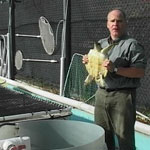It was Shillong once more after a long interlude. My young son who had grown up here called to ask if the hill air still smelt the same. Friends made sure, I took in some of the CALM experience and met a cross section of wordsmiths! Having been a “Bookmarks” regular when it opened till I left Shillong in 2010, this was an amazing celebration amid the pines, mist and strawberries. Wandering down Police Bazar, I walked into an old haunt.
I was in fact rereading a book bought here: Joseph Dalton’s Himalayan Journal published in 1855, by Murray & Sons, who also published Charles Darwin’s Origin of Species. Hooker and Darwin were contemporaries, friends and permanent fixtures of natural history’s page three in the 19th century. Joseph Dalton Hooker, the prolific botanist visited India 1848-1850 and came specifically to” the Khasia mountains” as he called it in his journal. A perfect reread for a revisit and to see Meghalaya through the impressions of a traveller past. Travellers during the British Raj, were often greeted with, ”......and who do you travel for?” the emphasis was on the who. “Sircar Bahadur” was a standard answer if you were in the civil services. If you worked for a commercial house, you were immediately classified “boxwallah”, the scientist as usual fell into the adventurous no man’s land between the two but commanded more respect than the boxwallah, in that empire built on trade.
Hooker, began his journey with an annual commission of £400 and a directive to catalogue plants for Kew Gardens, London by exploring the northern regions of India. Hooker left England on November 11, 1847 in august company. He travelled with the Marquis of Dalhousie, the new Governor General of India on H.M. Sidon as far as Egypt. In those days before the Suez Canal, Dalhousie invited Hooker to continue travelling with him, on the Indian Navy steam frigate, 'Moozafer’ to India. Sailing up the Hoogly, past the Botanic Gardens and into the booming batteries of Fort William, Hooker arrived to a tumultuous welcome designed for new Governor General of India. On the first of June 1850, Hooker first saw the ‘Khasia Mountains’ ; a 4000 to 5000 ft high Plateau, running east and west rising abruptly from his vantage point in Chattak (now in Bangladesh).
Through this point flowed trade in oranges, potatoes, coal, lime and timber to Calcutta. As he ascended to Churra ( Cherrapunji), he remarks on the distinctly Malayan character of the vegetation. The cultivated betel nut raising its feathery crown and graceful stem, is to him like an arrow shot down from heaven! Nothing in his experience prepares him for the breathtaking beauty of the cascades of water falling down the emerald green gorges, 2000 ft below. His journal records visits to Lailangkot, Moflong, Myrung, Chillong Hill, ( Shillong !), Nunklow, Jantia Hills, Nongkrem, Jowai and Nartiang. Having spent nearly 6 months in what is now Meghalaya, they had collected more than 2,500 species which came to loads carried by 200 men! They proceeded to Silchar by boats then back to Chattak, thence to Chittagong, before returning to Calcutta to sail for England. Informative as Hooker’s Himalayan Journal is, it has an over tone of “imperial nature” that is often unwarranted and sometimes less than digestible.
I first met Joseph Dalton Hooker, in the Bombay Natural History Society library, among the pages of his The Rhododendrons of Sikkim-Himalaya. What held me spellbound was I had in my hands, a book published in 1855, with full A4 page size drawings, glowing with the colours ,that trees bore in these East Khasi Hills. In 1849, Hooker and his companion Campbell, had travelled to Sikkim unauthorised by the Chogyal and were promptly imprisoned. The British swung into action, freed the two naturalists and used this incident as an excuse to annex Darjeeling district and Morang (now Siliguri area) in 1861. Amidst the political games, Hooker added another 25 species of Rhododendrons to his collections.
Rhododendron ciliatum, grown from seeds Hooker had collected in the Lachung and Lechung valleys of Sikkim in 1849, was the first rhododendron to burst into bloom in 1852 in the Kew Gardens. Another allied species he named Rhododendron dalhousiae, a floral memory and witness of a travelogue that began when a scientist and Governor General were in the same boat at least, till they reached India. The rhododendrons in the world famous Kew Gardens in England are in full bloom in May. The Rhododendron Dell in Kew Gardens contains over 700 specimen, many of them came out of the 21 baskets of rhododendrons and orchids (from the cache of 7,000 plants brought back from India ). The planting that began in 1850 and remains, even in 2012, a full 160 years later, one of Kew’s most-visited famed single plant type exhibits. At that time, a highly-respected gardener and writer named Donald Beaton called this display "the Sikkim of Kew".
Neither the produce, commodities, names of localities nor waterways have changed to date. But they certainly have become instantly recognizable associations of new political identities like Meghalaya, Bangladesh and Sikkim. Hooker came in with a single line baggage to collect plants for Kew, he took back extraordinary excess baggage recorded for posterity in his 7 volumes Flora of British India (1872-1897). It would record in modern scientific order, the floral wealth available for study and plunder, limited not only to our erstwhile colonists but to free citizens of independent India. Balanced cognisance of the label, “Fragile, Handle With Care” is vital to use of knowledge whether atomic or floral.
Source: Himalayan Journals JD Hooker
.jpg)
.jpg)





































